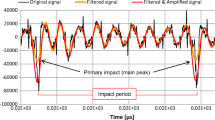Abstract
Plastics materials are nowadays used in many structural applications for the substitution of metals with respect to weight reduction. In order to utilize the high freedom of design and the light-weight potential of plastics materials in crash-relevant structural parts, so-called hybrid composites which combine the high rigidity and strength of steel with the advantages of plastics materials are investigated in the outlined research. Thereby, the joining of both materials as well as the design by means of numerical methods such as the finite element analysis (FEA) are challenges which have to be met. A new approach in joining is based on the modified arc welding process where metal pin structures are formed in one working step and subsequently welded onto the surface. The pins are formed with ball-shaped, cylindrical or spiky ends and produced directly from the welding wire without requiring additional pre-fabricated components such as studs or similar. This allows the small-scale surface structuring of metal components that can be adapted optimally for a form fit on the respective plastics structure. Subsequently, injection molding is used for the application of the plastics material onto the pin-structured metal part in order to generate a positive fit between metal and plastics in an intrinsic joining process. An additional joining process, which is carried out after injection molding, is not required. Within the framework of the research presented, comprehensive mechanical tests are presented to illustrate the suitability of pin-structured metal-hybrid composites in crash applications. In comparison to structures which are in particular exposed to static loads and therefore designed to exhibit maximum component strength, crash applications are designed to fail in a continuous process to achieve maximum energy consumption. The outlined research illustrates the enhanced failure behavior of pin-structured plastics/metal-hybrid composites and the increased energy consumption under impact loading. Moreover, a comparison between pin structuring and laser structuring with regard to the obtainable mechanical properties under impact loading is given. Concluding, the current potential and weak points in the simulation of plastics/metal-hybrid structures using FEA is presented and discussed.















Similar content being viewed by others
References
Mallick PK (2010) Materials, design and manufacturing for leightweight vehicles. Woodhead Publishing, Cambridge
Hopmann C, Haag Jv, Schild J, Brandt P (2015) Beitrag zum Handbuch Kunststoff-Metall-Hybridtechnik. In: Drummer D Handbuch Kunststoff-Metall-Hybridtechnik. Erlangen-Tennenlohe: Lehrstuhl für Kunststofftechnik, Erlangen
Grujicic M, Sellappan V, Omar MA, Seyr N, Obieglo A, Erdmann M, Holzleitner J (2008) An overview of the polymer-to-metal direct-adhesion hybrid technologies for load-bearing automotive components. J Mater Process Technol 197:363–373
Lotte J, Reisgen U, Schiebahn A (2015) Sensor-monitored multi-material joint made of fiber-reinforced plastic (FRP) an metal. J Adhes Soc Jpn 51:264–268
Somosköi G, Török I (2013) CMT pin—define the shape of the welded pin trough welding parameters. Prod Process Syst 6(1):47–56
Byskov-Nielsen J, Balling P (2009) Laser structuring of metal surfaces: micro-mechanical interlocking. Appl Surf Sci 255:5591–5594
Ren-Yu Y, Ray-Quen H (2016) Development of ultrasonic direct joining of thermoplastic to laser structured metal. Int J Adhes Adhes 65:28–32
van der Straeten K, Engelmann C (2015) Photonik im Leichtbau Laserbasierte Fügeverfahren. Lightweightdesigne 2:10–15
Şerban DA, Weber G, Marşavina L, Silberschmidt VV, Hufenbach W (2013) Tensile properties of semi-crystalline thermoplastic polymers: effects of temperature and strain rates. Polymer Testing 32:413–425
Kolling S, Haufe A, Feucht M, Bois PAD (2005) SAMP-1: a semi-analytical model for the simulation of polymers, 4. LS-DYNA Anwenderforum
Hopmann C, Klein J (2015) Determination of strain rate dependent material data for CEA crash simulation of polymers using digital image correlation. Comput Mater Sci 100 (Part B):181–190
Lauro F, Bennani B, Morin D, Epee AF (2010) The SEĖ method for determination of behaviour laws for strain rate dependent material: application to polymer material. Int J Impact Eng 37(6):715–722
Klein J, Hopmann C (2016) On the origin and handling of the force oscillation phenomenon in tensile impact testing of polymer materials. Exp Mech 56 (5):749–758
LS-DYNA Keyword User’s Manual Version 971 (2012) Revision 2829. LSTC Inc, Livermore
Acknowledgements
The depicted research has been funded by the Deutsche Forschungsgemeinschaft (DFG) as part of the program Cluster of Excellence Integrative Production Technology for High-wage Countries, as part of the research group ICD-C3. We would like to extend our thanks to the DFG. Furthermore, we would like to thank our friends at Fraunhofer Institute for Laser Technology Aachen (ILT) for supporting our project with technical assistance and for conducting the outlined laser structuring of the metal inserts. The authors are also very grateful to LANXESS Deutschland GmbH, Leverkusen, Germany, who supported the research project with test materials and technical support and Limess Messtechnik & Software GmbH, Krefeld, Germany, for technical support in optical deformation measurement.
Author information
Authors and Affiliations
Corresponding authors
Rights and permissions
About this article
Cite this article
Hopmann, C., Klein, J., Schönfuß, B.I. et al. Analysis and specification of the crash behaviour of plastics/metal-hybrid composites by experimental and numerical methods. Prod. Eng. Res. Devel. 11, 183–193 (2017). https://doi.org/10.1007/s11740-017-0727-6
Received:
Accepted:
Published:
Issue Date:
DOI: https://doi.org/10.1007/s11740-017-0727-6




